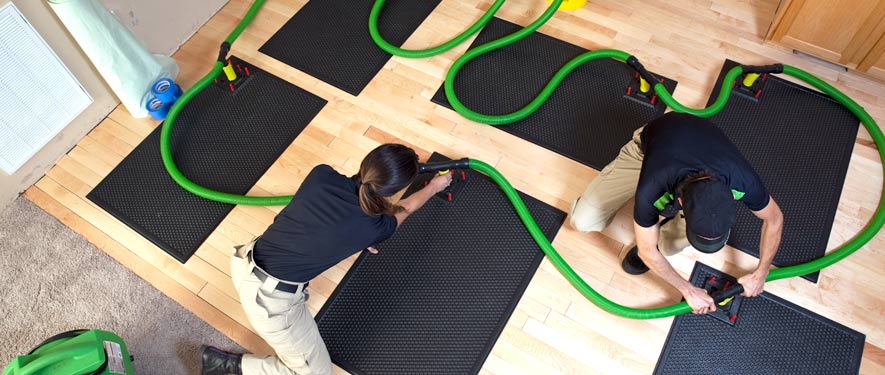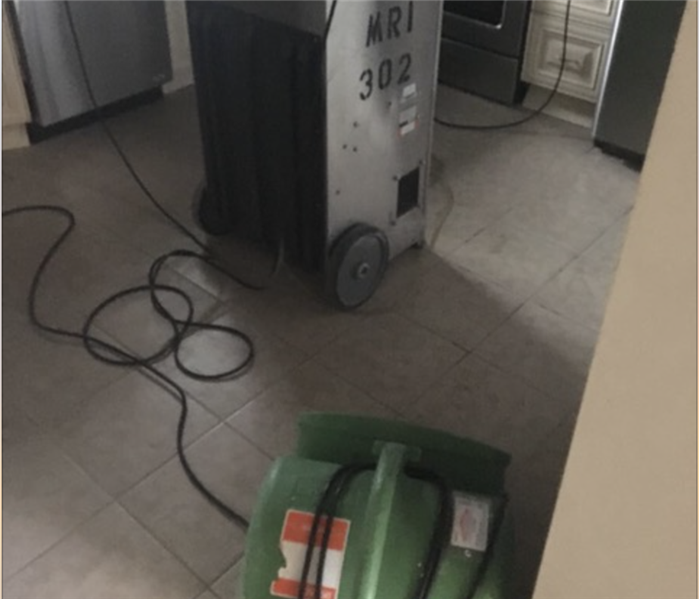
Step 4: Drying and Dehumidification
Our Water Damage Restoration Process
After the excess water is removed the next step is drying and dehumidification.
Visually the property may appear dry, but it isn't, at least not yet. Water finds a way, it absorbs itself into the flooring and walls because building materials are notoriously porous, material like wood, drywall, and carpeting. If water is allowed to make home in these materials the materials themselves will begin to break down, warp, and even develop mold damage.
Our teams are equipped with advanced technology and techniques that helps us identify and address the unseen moisture. Our dehumidifiers will help prevent secondary damage to contents and our commercial grade air-movers will dry the walls and flooring material.
Drying / Dehumidification
Our Professionals will use room measurements, temperature, and relative humidity to determine the optimal number of air movers and dehumidifiers to dry your home or business. We’ll carefully monitor the progress using moisture meters until the materials return to acceptable drying goals.
- Use Dehumidification Equipment
- Use Monitoring Equipment to Track Progress
Monitor Floor and Walls
We check the moisture levels to monitor the drying process.
- Monitor Floors
- Monitor Walls
Drying Equipment
- Industrial-grade dehumidifiers help prevent secondary water damage like swelling and warping of floors, walls, and furniture.
- High-speed air movers create airflow across walls, carpets, pads, and furniture, which accelerates the evaporation of moisture.






 24/7 Emergency Service
24/7 Emergency Service




